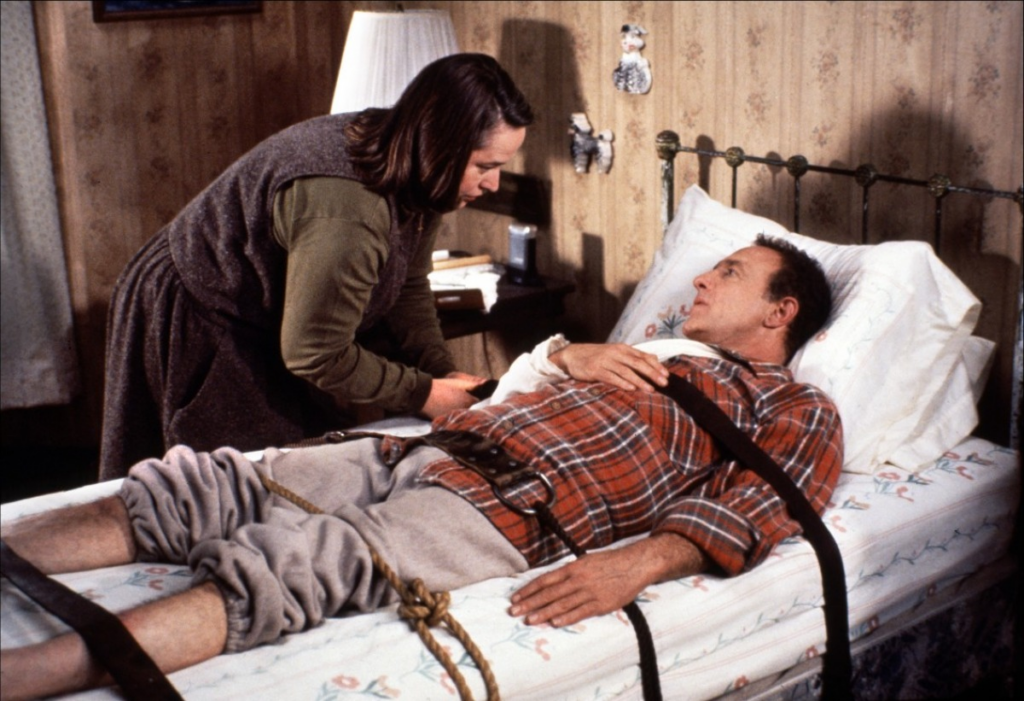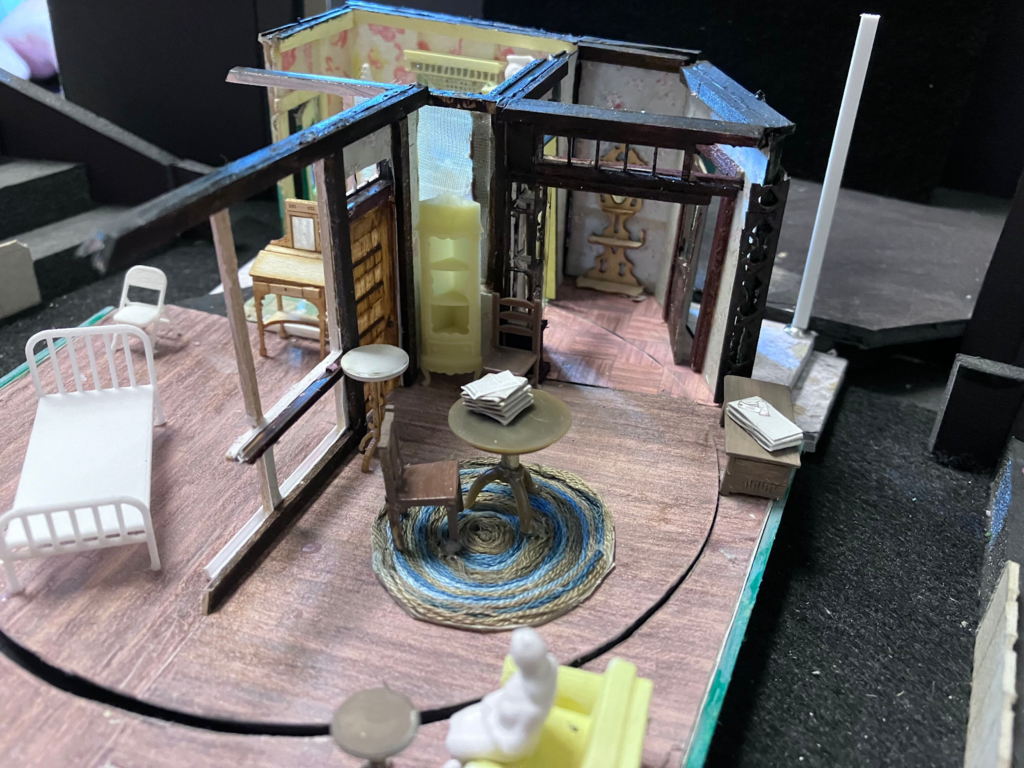Misery follows the famous Stephen King story of a crazed fan, Annie Wilkes, who will do anything to convince her favorite author, Paul Sheldon, to create a sequel to his last book. She grows increasingly controlling, deranged, and violent as she holds him hostage. But when limbs bleed and break, how will PlayMakers manage to make this happen successfully on stage?

Since Misery contains very graphic scenes, it is important for Fight, Violence, and Special Effects Choreographer, Jeff A. R. Jones, to make sure the illusions of gore and blood appear realistic, especially during the infamous “hobbling” scene. Yet, such effects are very different in the theater than they are on film.
“On film, you can set everything up, you can zoom in on the foot and not have to see what it’s attached to,” explained Jones. “And then you get exactly the angle you want and then smash it. Whereas on stage, it all has to be set up in front of the audience, ideally without the audience knowing that it’s happening so that when it happens, it’s just a surprise.”

With all of the action Jones is cooking up, this production is very physical for the main actor playing Paul, and so Prop Supervisor Lauren Reinhartsen’s main concern is that the props used are safe for his person. (A testament to how truly gruesome this story is!)
Before finalizing a prop, Reinhartsen creates a mock-up of an interactive prop to be used in rehearsals. Actors then report on its utility and how well it is integrated into the scenes and environment of the performance.
“Props are present to help support and tell the story of the play. They support the actors as they explore the world they are working to portray, giving them objects to interact with, and information for the audience members to gather to help understand and process what they are seeing. With a show like Misery, which began as a novel, rather than a play, we have a much deeper pool of information from which to build the world the audience sees…”
In charge of bringing this pool of information to life is Director Jeffrey Meanza, a real horror film fan. In rehearsals, his main goal is to capture the tension and claustrophobia that is inherent to Paul’s circumstances under Annie’s dominion.
“The actors, artists, and technicians are all in the same room, so the effects need to be exciting and believable, but not so believable that anyone starts to get worried or feel unsafe,” said Meanza. “It’s an intricate balancing act, but our designers and production teams are superb at achieving these moments.”

“The set is designed to evoke a kind of animal trap. As Paul continues to try to maneuver within that world, the space becomes more complex and confusing. The sound and lights are envisioned to help audiences understand Paul’s experience of feeling confined and in danger over time.”

As an ode to the famous movie, there are little Easter eggs of information embedded in the set, so be sure to keep your eyes out for them!
Without a doubt, Misery will be a smashing performance that’ll keep you on the edge of your seat. Will Paul escape the wrath of the psychopathic Annie? Find out who will come out on top in this cat-and-mouse game when it plays out before your very eyes at PlayMakers.

